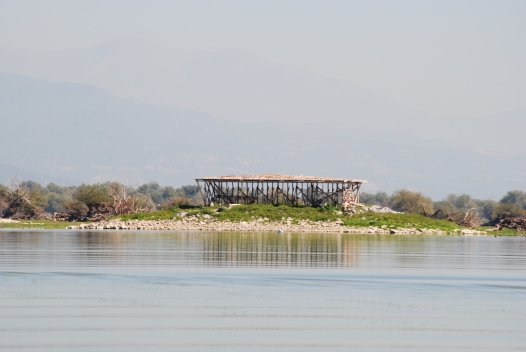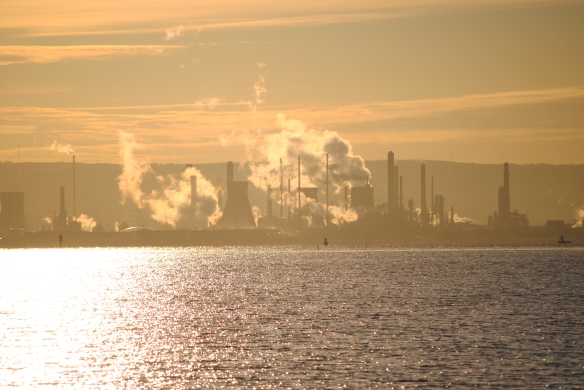Landscapes can appear natural but when you understand their history it is clear appearances can be deceptive.
 One such landscape can be found at the center of Lake Kerkini National Park, Greece. Here there is a striking example of the complex unintended consequences of a major infra-structure project. In 1932 a dam was built on the River Strymonas to create a massive reservoir for irrigation and flood protection, which also resulted in the creation of a dynamic landscape from the marshlands along the riverside.
One such landscape can be found at the center of Lake Kerkini National Park, Greece. Here there is a striking example of the complex unintended consequences of a major infra-structure project. In 1932 a dam was built on the River Strymonas to create a massive reservoir for irrigation and flood protection, which also resulted in the creation of a dynamic landscape from the marshlands along the riverside.
 The seasonal water level of the reservoir dropped three meters in depth between spring and autumn-winter, which resulted in a 5000 hectare lake being reduced to almost nothing by winter. These seasonal changes in water level created riparian forests, with trees being flooded, depending on altitude for between 50 and 190 days of the year. This dynamic habitat meant Lake Kirkini became an increasing focus of a remarkable range and number of bird life (including pelicans and flamingos) and as such was recognized in 1975 as an internationally important RAMSAR site for migratory birds.
The seasonal water level of the reservoir dropped three meters in depth between spring and autumn-winter, which resulted in a 5000 hectare lake being reduced to almost nothing by winter. These seasonal changes in water level created riparian forests, with trees being flooded, depending on altitude for between 50 and 190 days of the year. This dynamic habitat meant Lake Kirkini became an increasing focus of a remarkable range and number of bird life (including pelicans and flamingos) and as such was recognized in 1975 as an internationally important RAMSAR site for migratory birds.
A new dam was built in 1982, which increased the seasonal fluctuation to about a 5 m change in water level, and resulted in the surface of the lake varying from between 5000 to 7,300 hectares. The larger level and size of the lake meant that the shallow parts of the lake were more limited, many of the seasonal breeding locations for the birds were permanently flooded and the riparian forest underwater for longer and dying out.
 Lake Kirkini has also been an important focus for economic activity (including fisheries and tourism) in the region. It was also the host of the largest population of water buffalo in Greece, and other mammals, which were causing problems with over grazing (reducing habitat for nesting) and trampling of nests.
Lake Kirkini has also been an important focus for economic activity (including fisheries and tourism) in the region. It was also the host of the largest population of water buffalo in Greece, and other mammals, which were causing problems with over grazing (reducing habitat for nesting) and trampling of nests.
In 2006 Lake Kerkini was established as a National Park. The management authority of the National Park has been taking measures to gradually reduce the water levels and to re-balance the dynamics required for riparian forest and the associated breeding birds. This long term vision to re-balance the wetland, is being supported by shorter term interim measures such as creating artificial platforms for the pelicans to breed on while water levels are changed more gradually.
A landscape which is such an important hub of biodiversity, but also important in economic terms to local communities, is clearly dependent on its sensitive integrated management for a balanced future.











